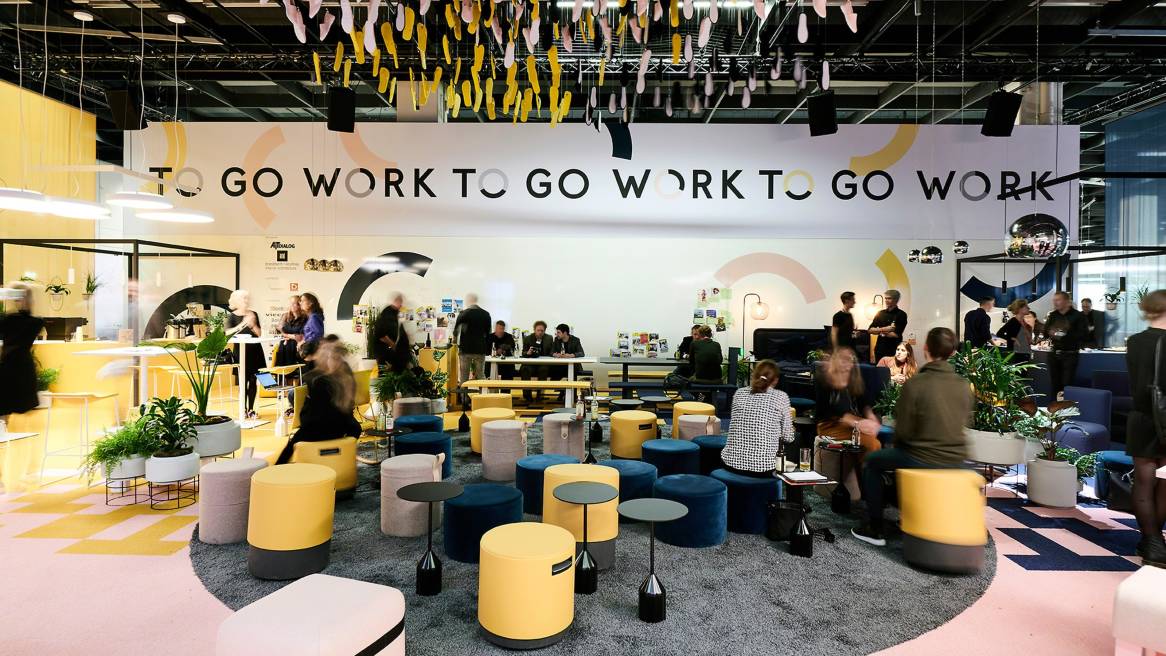The Future by the Future
How do future generations want to work? Ask these students.
Millennials – and how they want to work – have been making headlines for years. But, as Gen Z starts entering the workforce and the war for talent tops the list of what keeps leaders up at night, the question becomes: How does the workforce of tomorrow envision the future of work?
Organizations around the world aren’t just fighting to attract top talent. They’re struggling to keep them. Research shows that patterns in work tenure are changing. Just last year in France, 20 percent of employees said they planned to stay with their employer for life, down from 30 percent just two years prior. In Germany, the drop was 15 percent (from 40 percent to 25 percent).
So, how does the next generation want to work? And, how can the workplace support those desires?
That’s exactly what 23 students from the AMD Academy of Fashion & Design in Hamburg set out to define. In an initiative driven by AIT-Dialog, brandhem + krumery interior architecture and Steelcase, the students were tasked with conceptualizing and creating a common vision of the future of work.
Guiding principles
During several workshops, the students defined the guiding principles around what their ideal work experience would look and feel like:
- Flexibility and freedom
- Creativity, fun and wellbeing at work
- Good work-life balance
- Networking within hierarchies and disciplines
- Working independently within existing work structures
- Tolerant and open working styles, free of rigidity
The concept
Once they defined the principles, they got to work.
“We started by thinking about the different areas we spend our time throughout the day and how they’re changing in a dynamic way,” said Pia Schwarz, a student involved in the project. “All three areas – home, work and free time – are equally important in our life, so we wanted to represent them using three equally sized areas.”
They imagined a future where everyday life dictates where and how people work. Their final “Work To Go” concept combines three individual spaces – “Office”, “Home” and “Free Space” – all connected by an area they called “Mindroom”.
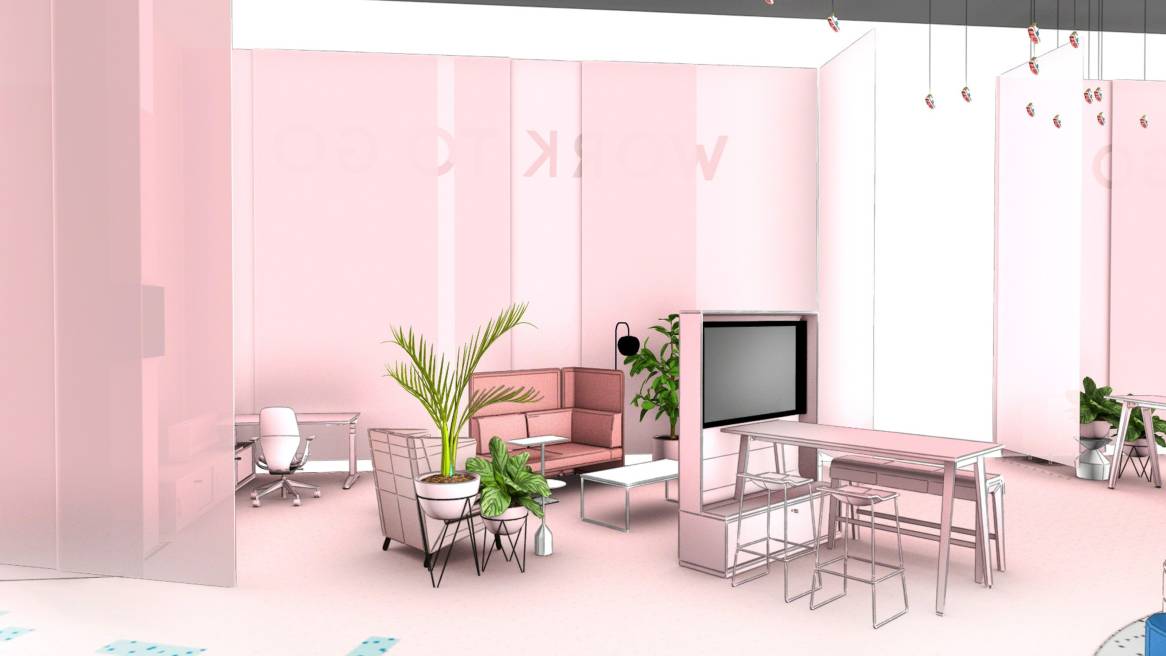
Their user-centered approach led them to create flexible spaces that empowered users to decide where and when to work. Meanwhile, digital and analog devices in all four areas facilitated individual work, learning and networking.
“We want to be able to work from anywhere and easily integrate family life with our professional life”, said Nicola Voss, a student involved in the project. “Communication was also key to allow for exchange and learning.”
Concept to creation
The students worked with brandhem + krumery interior designer Anja Rosenberg, AIT Dialog and Steelcase’s Joachim Müeller Wedekind to bring their concept to life at Orgatec, a biennial international trade fair in Cologne.
Here’s a look at their work:
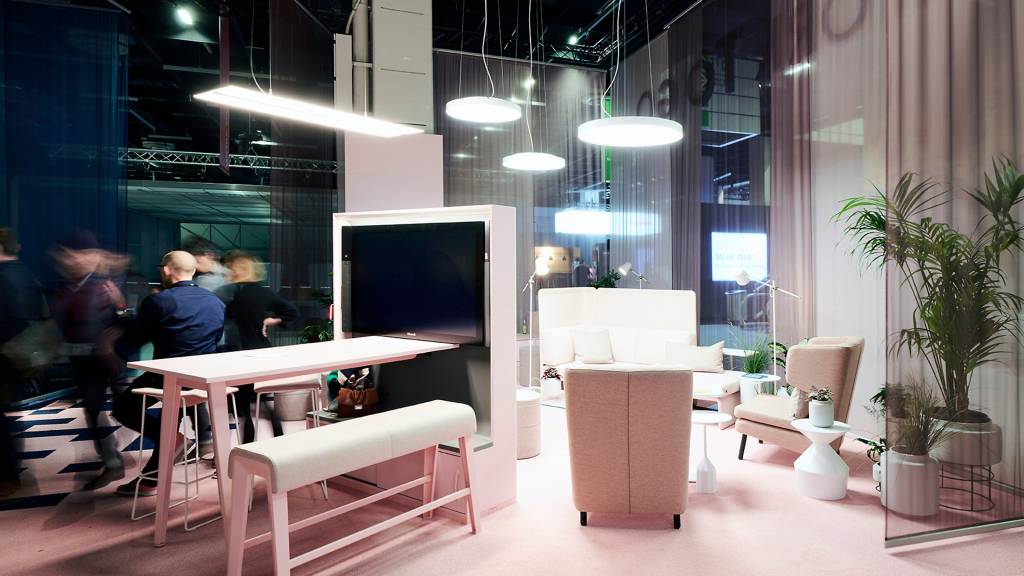
Office
This space is designed to encourage communication, structure, information and focus. With individual and group workspaces, as well as mobile furniture, it’s built to support a variety of workstyles.
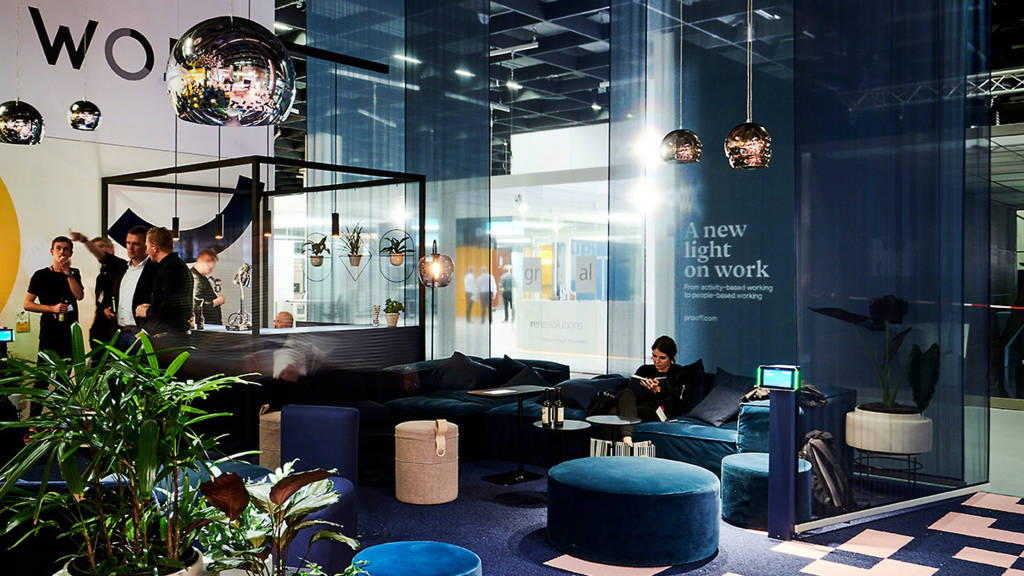
Home
A place for rejuvenation, eating and sleeping, the cozy living area encourages people to relax. But, it’s also a place where they can get work done.
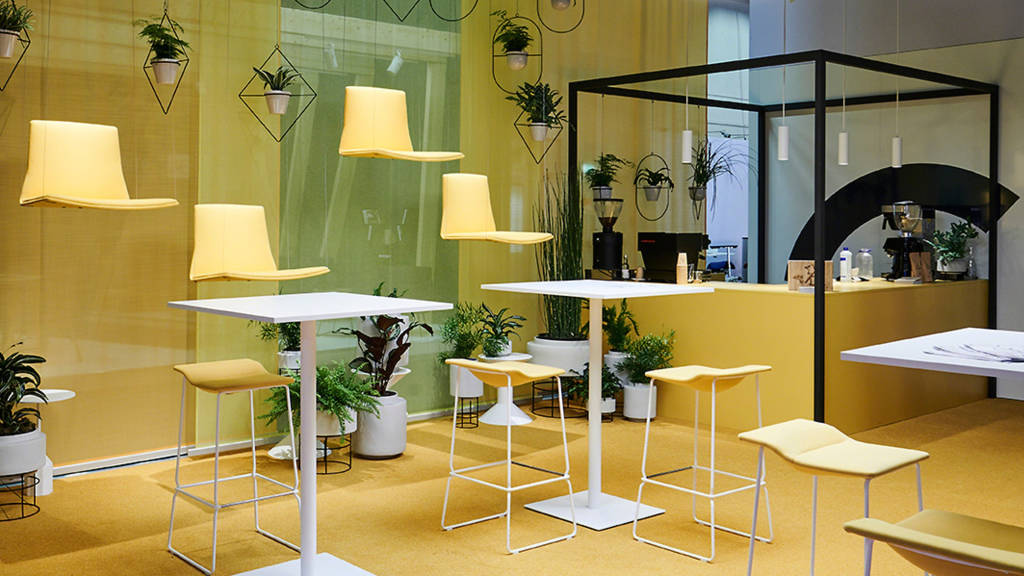
Free Space
This area inspires movement, nature, and vitality. The relaxed and natural atmosphere enables people to move freely, similar to a café-like environment.

Mindroom
Situated in the middle, this space connects the others and supports networking, information exchange and communication. Whether in workshops or discussions, people can touch base while sitting on the spontaneously arranged stools.
The “Work To Go” stand was one of the most visited places at Orgatec 2018.
“It was great to get a lot of positive feedback,” said Rosenberg. “The students’ work gave visitors an opportunity to reflect about the future of work from a completely new perspective.”
This initiative was a cooperation between:
AIT-Dialog, brandherm + krumery interior architecture, Steelcase, Bolia, Interface, Polyvision, Coalesse, Viccarbe, Creation bauman, Zumtobel, Sodexo, Pfleiderer, Microsoft and Gira.
Photo Credit: Joachim Grothus

